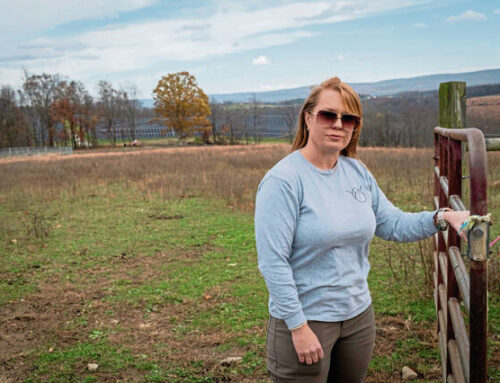What’s behind the sharp decline in Santa Ana’s cannabis tax revenue?
June 23, 2025

Santa Ana led the way in Orange County’s legal cannabis market. It was the first city to allow retail dispensaries and the first to collect millions in local cannabis tax revenue to fund community programs.
But those dollars have been shrinking, falling by more than half since the peak of the pandemic.
Since voters approved a local cannabis tax in 2018, the city requires that no less that 50% of all tax revenue from adult-use cannabis sales go toward youth services. In fiscal year 2021–22, the city collected $20.6 million from this tax. But in the proposed budget for 2025–26, it’s projecting just under $10 million in revenue.
That’s more than a 50% drop in just a few years.
Over the years, the tax has paid for community services such as library tutoring programs, new playgrounds, fitness courts and splash pads, and even distributing hundreds of Chromebooks and hotspots to kids.
Those asked attributed the revenue’s decline to a few factors, but also, the city has adjusted its taxes to hopefully spur a rebound in the long run, officials said.
Robert Solomon, a retired UC Irvine law professor and cannabis policy expert, said there’s been a decline in sales stemming from simple economics.
“Initially, when I first started getting involved in this, Santa Ana had a monopoly in Orange County,” Solomon said. “Costa Mesa was the next town to come in. So to some degree, it’s more competition. They don’t have a monopoly anymore.”
Councilmember David Penaloza, first elected in 2018, pointed out the city’s cannabis tax revenue peaked during the COVID lockdowns, when more people were at home.
“Everyone was stuck at home, not going to work, so there was a huge increase in 2020 and 2021 with retail cannabis consumption, and naturally, we had more revenue,” Penaloza said. “And then, as other cities that were struggling financially saw how beneficial it was to our tax coffers, you had cities like Costa Mesa and Stanton start moving toward the retail cannabis industry and that has had an effect.”
Field trips were once organized from the large senior-living community in Laguna Woods, bringing groups of older consumers to shop legally at retail stores in Santa Ana, where they purchased items such as ointments and teas, Penaloza added.
“We’re not seeing that anymore,” he said. Last year, the first legal cannabis retail shop in South Orange County opened in Laguna Woods.
Arthur Hodge, who represents more than 50 cannabis retailers across Southern California, including Jungle Boys in Santa Ana, agreed the slump began after the pandemic peak.
“There was an uphill climb in revenue going into COVID, then in COVID, there was a spike in sales and then continued into 2021,” Hodge said. “It peaked out then. Customer traffic, revenue, drop-off profits are all down. My gut tells me there’s still more time before it gets better.”
To help legal shops stay competitive, the Santa Ana City Council voted in late 2022 to reduce cannabis tax rates. The changes, effective January 2023, cut retail taxes from 8% to 7% for recreational sales and from 6% to 5% for medicinal sales. Taxes on cultivation, manufacturing and distribution dropped from 6% to 1%.
“We were ahead of the curve in terms of decriminalizing this industry and really accepting it as part of Santa Ana’s culture,” Councilmember Johnathan Hernandez said. “Part of really making the adjustments to cannabis was to make sure that our taxation of it didn’t reinforce the narrative of this being a crime that should be criminalized.”
The new structure includes incentives for “social benefit” operators — businesses that hire veterans, partner with nonprofits or unionize — qualifying them for further tax reductions. Some retail operators have dropped their tax rate to as low as 5%, Hernandez said.
“Now that there’s lower taxes, you’re going to see throughout maybe the first couple of years an adjustment in terms of generating revenue,” he said.
Solomon added in the effects of a statewide drop in cannabis prices to the factors taking a toll on the city’s revenues.
Data from California’s Department of Cannabis Control shows that the price of traditional cannabis flower, the most popular product type, fell from $42.57 per unit in 2021 to $37.23 in 2024. Meanwhile, sales revenue from flower dropped significantly, from $206.7 million in May 2021 to $117.3 million in May 2025.
That market squeeze has been especially difficult for Santa Ana dispensaries, which also face regulatory hurdles at home, some operators complained. Where Costa Mesa allows dispensaries in high-traffic commercial zones — though not beyond — Santa Ana’s rules keep cannabis retailers to industrial pockets.
“We shop where it’s very convenient,” Solomon said. “Where you go, and how you park, and for some people, is there a Taco Bell next door, you know, there’s all kinds of reasons why people shop. And driving in Santa Ana, for some people, is not a pleasant experience.”
Rooz Vahdatpour, who owns Tropicanna Dispensary and Weed Delivery, said the lack of visibility and convenience has led to intense price competition. With so many shops packed into the same few areas, customers are getting more deals, but at a cost to operators.
“What this has created is the lowest price, so everybody’s giving away everything for nothing.” Vahdatpour said. “And they can’t make payments, and that’s never a winner.”
Penaloza said he’d be open to exploring the possibility of allowing cannabis dispensaries in commercial zones, as long as market saturation and what the local residents think is taken into account.
And, even with the new lowered taxes, legal dispensaries in Santa Ana are still competing with illegal ones that typically charge no taxes and skip state-mandated product testing.
“At Farmacy, we have customers come in all the time and say they sometimes go to the other shops — the ones that are illegal — and things are cheaper there,” said Kandice Hawes-Lopez, director of the Orange County chapter of the advocacy group NORML and an employee at the licensed Farmacy dispensary. “We work really hard to get our products as cheap as possible to be competitive. We have to work a lot, lot harder to make ends meet to be profitable.”
Hernandez said the city is working to expand the legal market in new ways. Santa Ana has legalized cannabis consumption lounges, spaces where people can use cannabis products on-site, and has plans for a city-sponsored cannabis festival that could include on-site sales.
“This will allow us to generate revenue for the city, remain leaders in terms of our competition and to remain at the forefront of this industry,” he said. Hernandez estimated the lounges and festival could bring in $2 million to $3 million annually.
Still, the tax revenue drop comes amid broader budget challenges. Measure X, the city’s 1.5% local sales tax that funds a range of programs including public safety, homelessness response and infrastructure, is set to sunset in 2029. That tax currently brings in more than $80 million a year.
When asked whether the cannabis shortfall, coupled with Measure X’s expiration, raises concerns about Santa Ana’s finances, Hernandez said, “I do think that it is our responsibility to be concerned about the shortfall.”
“But I also think that knowing that Santa Ana has legalized cannabis lounges … I think the areas of opportunity exist for us in cannabis,” he added.
Penaloza said the city has to prepare for multiple shortfalls.
“As far as finding ways to fill those gaps,” Penaloza said, “I think there’s a lot of potential when it comes to just investing back into our infrastructure.
“Take Bristol Street, for example, that’s been under construction since 1989,” he said. “We’ve been pushing hard the last couple years for our city to complete that project.”
Penaloza also suggested raising Santa Ana’s transient occupancy tax, or hotel bed tax.
“That tax is one that’s not on our residents, right? It’s on visitors,” he said. “I think cities like Anaheim and Garden Grove, theirs is a lot higher.”
Currently, Santa Ana’s bed tax sits at 11%, while Anaheim and Garden Grove charge 15% and 14.5%, respectively.
Hawes-Lopez said many in the legal market are also still hopeful that statewide action can help level the playing field. She pointed to AB 564, a bill that would freeze increases to California’s cannabis excise tax, currently set to go up in July.
Supporters of the bill say it could prevent further price spikes and help keep legal shops afloat.
“We’re building parks and funding libraries and good programs with cannabis monies,” Hernandez said, “and we want to make sure that continues.”
RevContent Feed
Search
RECENT PRESS RELEASES
Related Post









